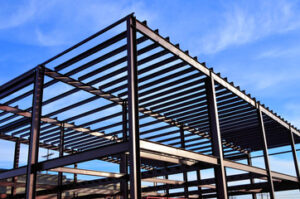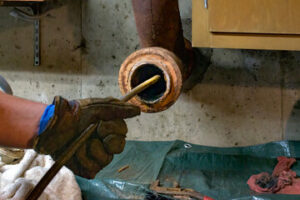Oklahoma Steel Buildings have long been a popular construction solution for commercial, industrial and agricultural purposes. They feature large, clear-span framing that minimizes the need for interior support columns, allowing for more flexible design options.

The flexibility and adaptability of steel structures makes it easy to reconfigure space for changing needs and future expansions. This flexibility can save businesses time and money in the long run.
Structural steel is strong and durable, making it a great choice for commercial, industrial, and residential buildings. But it’s also incredibly versatile and adaptable, allowing for any building design that the architect or designer has in mind. It’s also an environmentally responsible option, as it can be recycled again and again without losing its strength or quality.
Pre-engineered steel buildings are designed to stand up to a variety of extreme weather conditions, including hurricanes, tornadoes, blizzards, and floods. They’re also resistant to fire and aren’t subject to the same kinds of damage caused by termites, wood rot, mildew, or fungus growth. In addition, steel building structures aren’t susceptible to twisting and warping. That means you’ll spend less time and money fixing things like sheetrock cracks or sagging door frames.
Because they’re made from steel, metal buildings are stronger than other building materials and have a higher tensile strength. They’re also lighter than traditional construction materials, which can reduce costs by requiring a smaller foundation and reducing the weight of other structural components. In fact, steel has one of the highest strength-to-weight ratios of any building material.
Aside from their durability and strength, metal buildings are also highly insulative. This means that they’re great for cold climates and can help keep energy bills low. They can be designed to trap heat in the winter and reflect heat in the summer, reducing the need for air conditioning. This makes them a smart choice for businesses that want to control their energy use and reduce their environmental impact. They can even be made to withstand earthquakes and tornadoes, further protecting valuable equipment and inventory.
Durability
Steel is a versatile building material that can be molded into nearly any structure that you have in mind for your personal, business, government or house of worship. It is used for framing, siding, special structures, and more. Steel buildings are very durable and can withstand any weather conditions that may come its way. It can flex and bend rather than crack or break, which is a huge benefit in harsh environments like those found in hurricane and tornado areas. Steel can also be molded and shaped into an eye-catching design, giving your building that extra artistic flair.
A major factor in the durability of steel buildings is their precision engineering and design. Engineers and architects carefully calculate and optimize every component to maximize structural integrity. This helps to reduce the amount of stress and strain on the building, which extends its lifespan and minimizes future maintenance costs.
The durability of steel also makes it a good choice for commercial and industrial buildings. Since it is an inorganic building material, it is not susceptible to mold or mildew and is impervious to insects like termites. In addition, unlike wood framing, steel will not rot or warp over time. This helps to save on long-term maintenance costs for the building owner and can also lower insurance costs.
Additionally, steel is extremely easy to work with. It takes less time to erect than other building materials because the components are pre-engineered at the factory and can be assembled on site. This reduces the risk of human error and makes the construction process faster. It also reduces the need for on-site labor, which cuts down on cost and allows the project to be completed sooner.
Aesthetics
Steel buildings are a cost-effective alternative to traditional structures like brick and mortar. They are highly durable and can withstand many different weather conditions, including high winds and rain, earthquakes, and fire. They can also be designed to resist rust and vandalism. These qualities make them a great choice for commercial spaces, garages, warehouses, and retail stores. They also offer a wide range of customization options, which can be used to improve the aesthetics of a building and increase its functionality.
Customized color schemes, unique roofing options, stylish window designs, decorative door selection, creative signage solutions, functional lighting choices, enhanced landscaping ideas, and weather-resistant finishes can all contribute to the visual appeal of a steel building. These simple but effective enhancements will help to create a visually appealing, long-lasting exterior for your structure.
Incorporate warm colors into the interior of your steel building to create a cozy ambiance that balances the industrial feel of the structure. Incorporating these colors through wall paints, furnishings, or decorative elements will add a touch of warmth and character that contrasts well with the sleek design of the building’s framework.
Add an artistic touch to your steel building by incorporating large-scale artworks. Artistic murals can introduce a sense of personality and transform your steel building into a visually stimulating space that tells a story that is unique to you and your company. These murals can be directly painted on your walls or hung as tapestries. They can even serve as a focal point to create a dramatic and compelling entrance into your building. The beauty of these murals is that they can change as the needs and style of your business or organization evolve over time.
Flexibility
Steel buildings can be designed to suit any architectural preference, and are often preferred by architects seeking a more flexible building structure. Rigid frame structures allow for expansive column-free interiors that maximize usable space. They are also highly flexible when it comes to expansion, allowing for additional rooms to be added later without costly reconstruction.
When choosing a contractor to construct your steel building, make sure they are knowledgeable about metal construction and have extensive experience. A reputable contractor will take the time to communicate with you throughout each phase of construction and ensure that your vision becomes reality.
To begin your construction project, you’ll need to pour a concrete foundation. Next, frame columns will be installed vertically into your concrete foundation and connect to eave struts. These additional components provide structural support and help to shape the roof of your steel building.
Once these structures are in place, the framed openings for roll-up doors and walk doors will be cut into the sidewalls and end wall panels. These openings are also pre-framed to fit a variety of windows and doors.
The walls of a steel building are made of high-quality metal and come in a variety of premium finishes that will protect the panels for years to come. They also have deep wall cavities, which help to reduce air leakage and can be insulated with a wide range of energy-efficient insulation materials.
Steel buildings are a versatile option for industrial, commercial and residential use. The flexibility of their construction process and materials means that they can be constructed to suit your needs in less time and with minimal disruption. Whether you’re looking for an office, warehouse, garage or a barndominium (pictured), the durability of steel is the ideal solution for your next project.
Sustainability
In the construction industry, metal building systems are a leader in sustainable practices. These practices include implementing energy-efficient tasks and using green technology. The steel buildings’ innate durability also helps to promote sustainability by reducing the need for frequent maintenance. This minimizes the environmental impact that would result from continuous reconstruction of the building and saves on energy costs.
Steel is a cradle-to-cradle material that can be recycled indefinitely without losing its physical properties or functional integrity. In fact, no more than 1% of steel ever ends up in landfill — the rest is continuously reused in an endless number of applications. This recyclability makes it a natural choice for sustainable construction.
Pre-engineered steel buildings epitomize efficiency, as the components are fabricated and assembled in the factory, minimizing on-site construction time and resources. Additionally, steel structures are more environmentally friendly than traditional wood-frame buildings as they produce less air pollution and require fewer energy resources to heat and cool.
Another way that steel is sustainable is through its versatility. A well-built steel building can be modified for expansion or relocation if the owner so chooses, allowing for a cost-effective solution for future changes in business needs. This flexibility is a major benefit that makes steel buildings an excellent choice for a wide range of commercial, agricultural and residential applications.
As a green alternative to other construction materials, metal is an ideal choice for architects, engineers and contractors who are designing sustainable buildings. Its inherent strength and durability provide superior performance compared to alternatives, while its recyclability allows for an endless life cycle. As more and more building regulations, council planning departments and designers recognize the benefits of using sustainable products, the steel framing system is gaining a lot of popularity.




